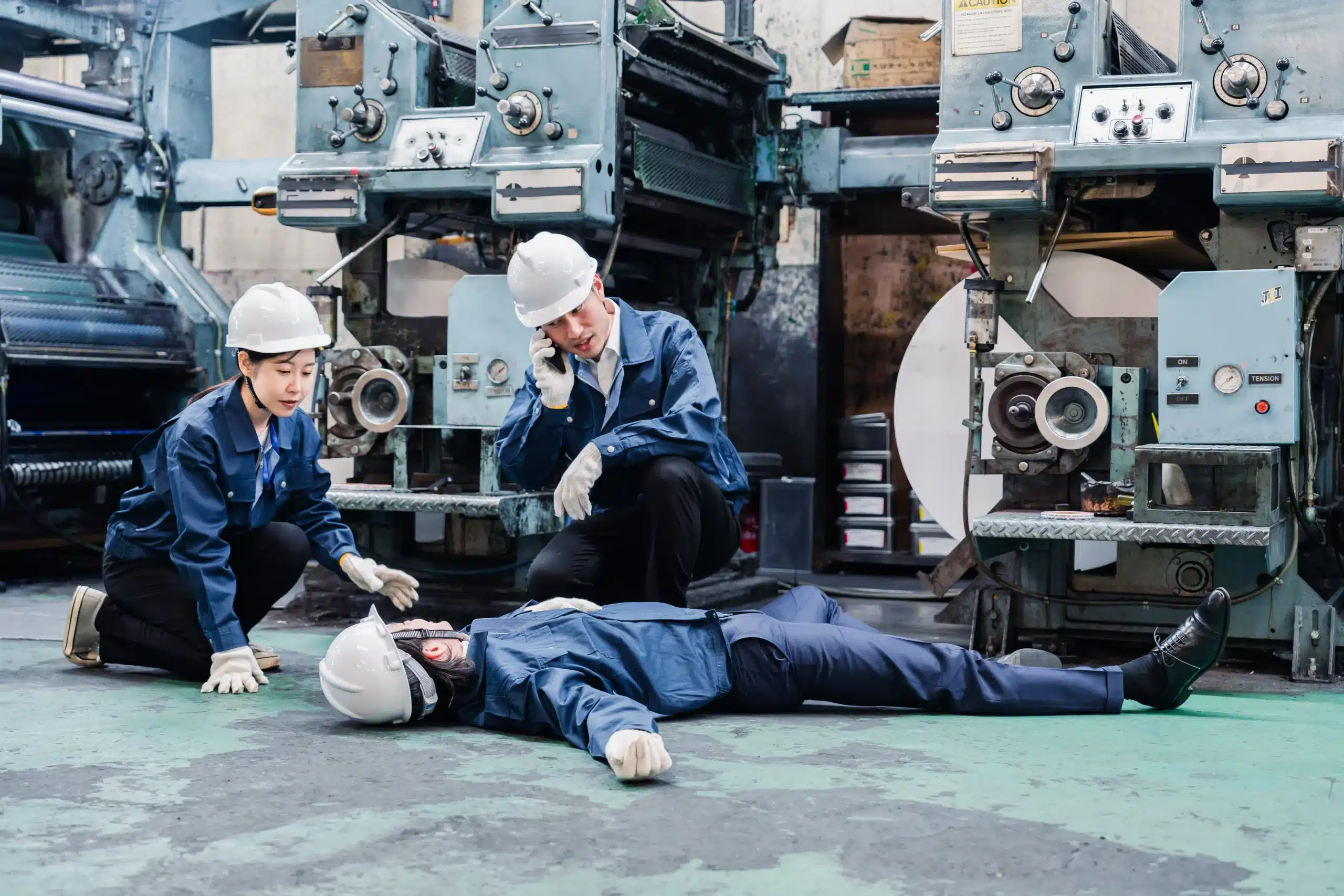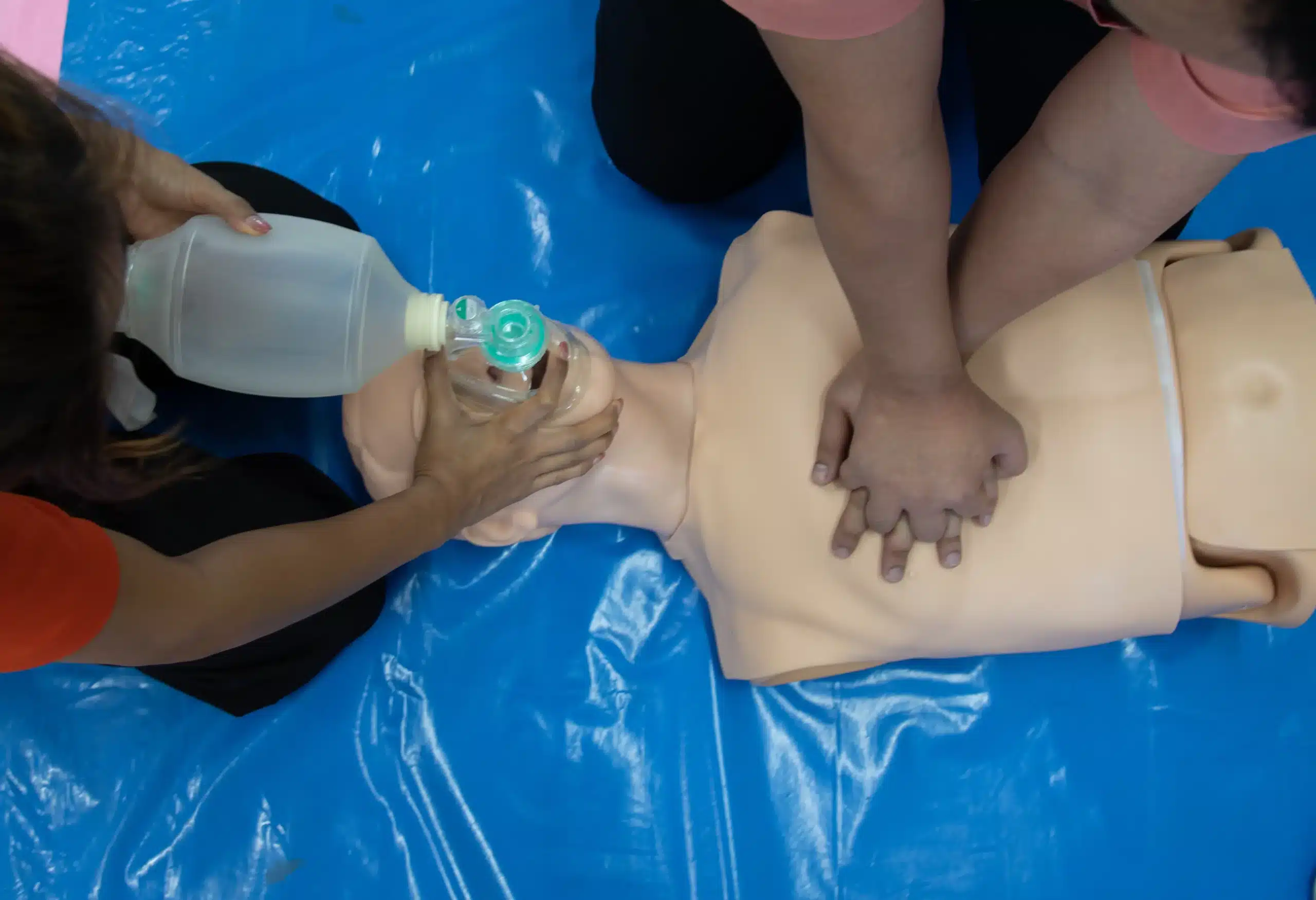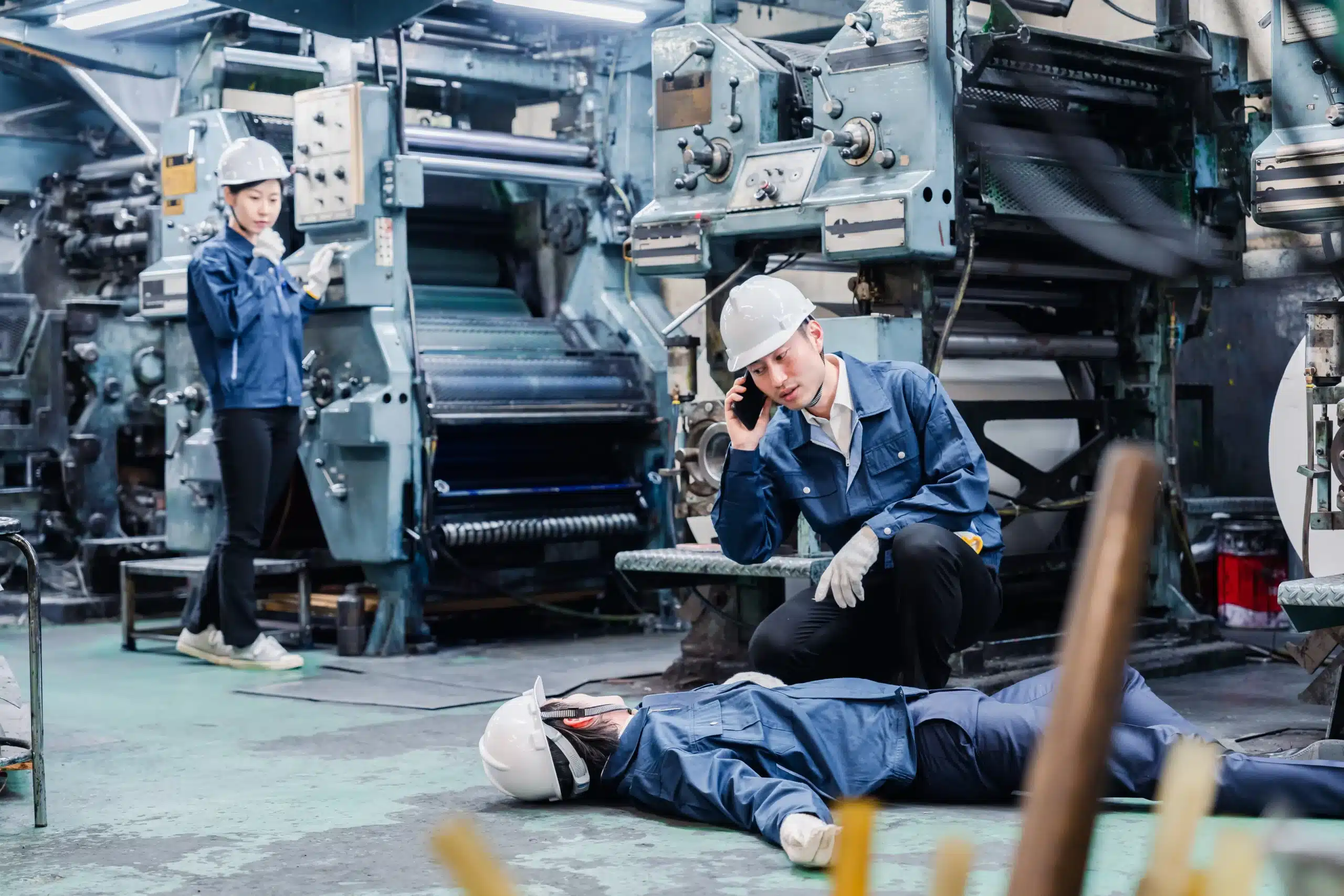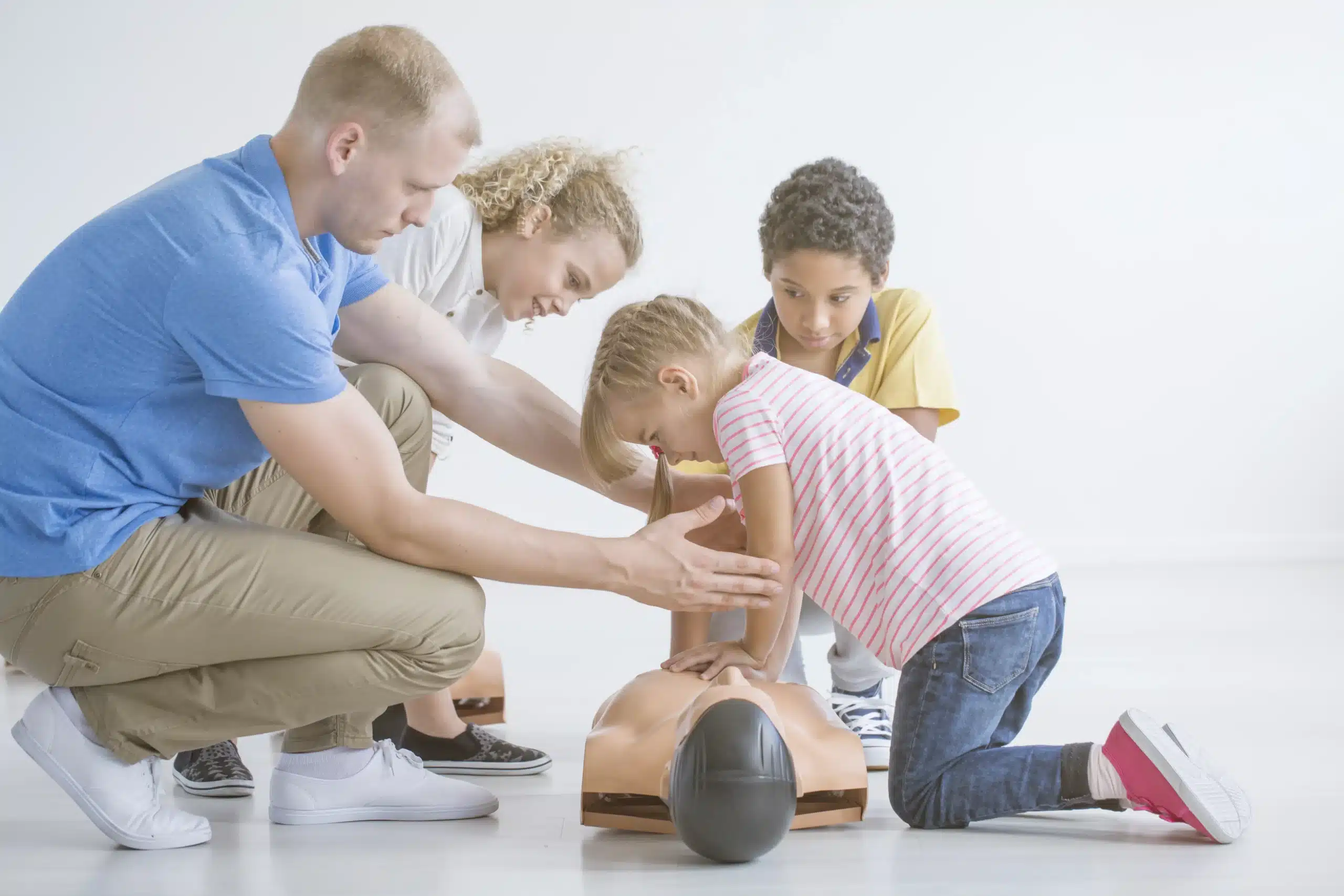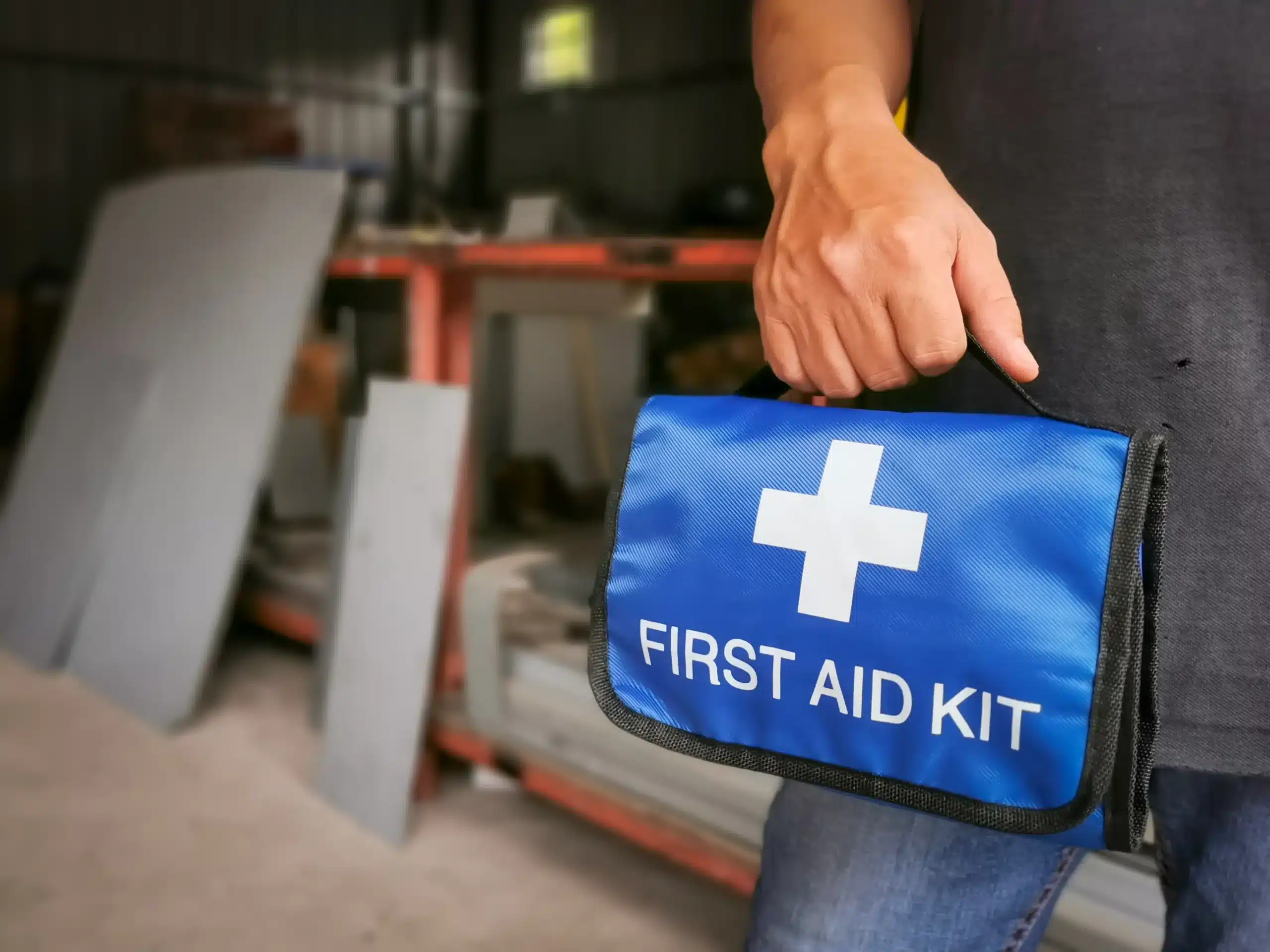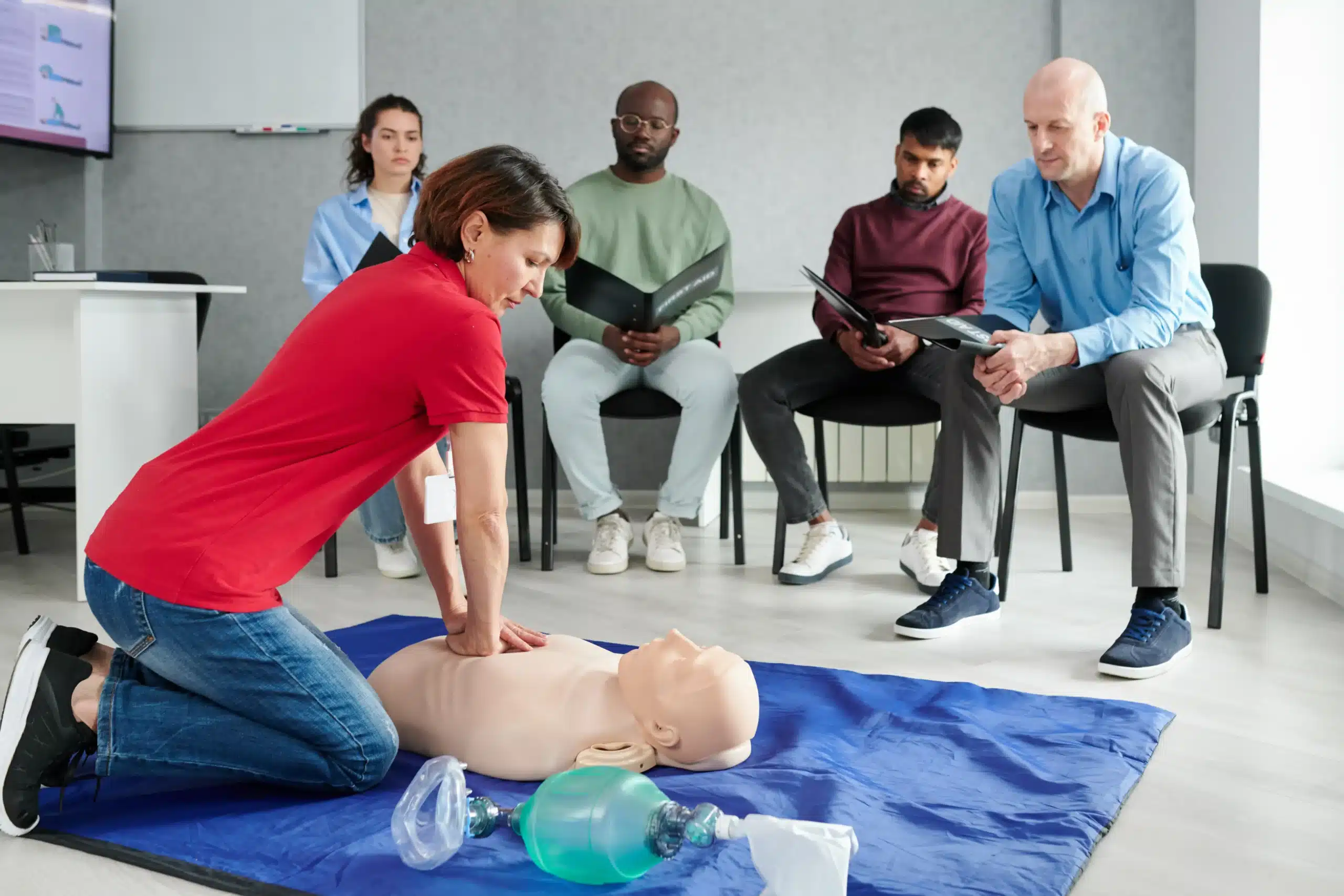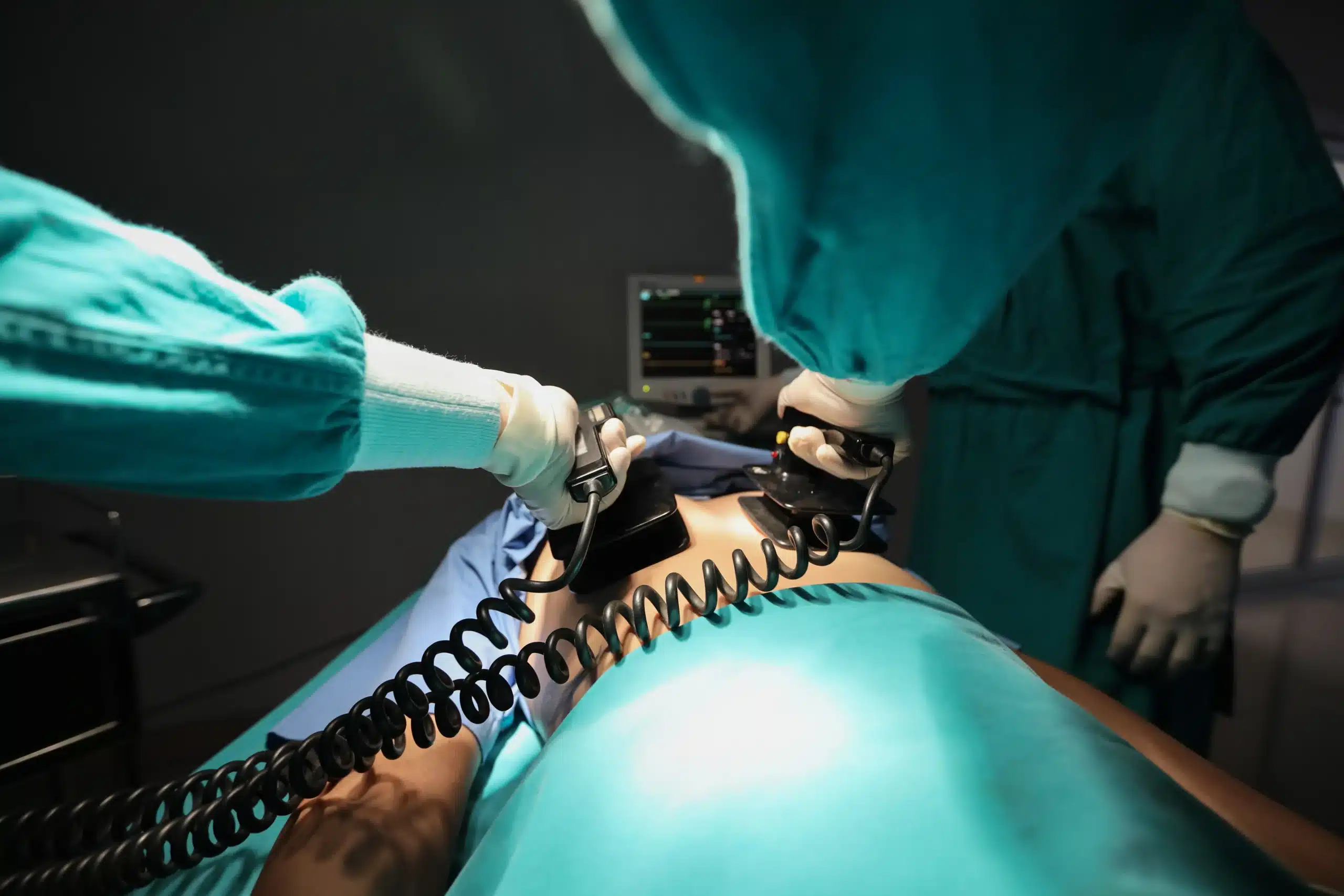Basic life support (BLS) skills are invaluable, empowering you to respond effectively during medical emergencies. If you’re in San Jose and considering BLS certification, this guide will walk you through everything you need to know. We’ll cover the essential components of BLS, who needs it, and where to find reputable training providers in San Jose. We’ll also compare BLS with other CPR certifications, discuss costs and benefits, and explore the latest innovations in BLS training. Get ready to find the perfect BLS course in San Jose that fits your needs and empowers you to make a difference.
Key Takeaways
- BLS certification provides essential life-saving skills: Learn CPR, AED use, and airway management techniques to confidently respond to emergencies. Choose a course format—in-person, blended, or fast-track—that fits your lifestyle.
- Finding the right BLS course requires research: Consider factors like cost, location, schedule, and the provider’s reputation when selecting a course. AHA-certified training from reputable providers ensures you receive high-quality instruction.
- Maintaining your BLS certification is crucial: Renew your certification every two years and practice regularly. Staying current with the latest guidelines ensures you can effectively apply these skills when needed.
What is BLS?
Basic Life Support (BLS) is a crucial life-saving certification that gives you the skills to respond to medical emergencies. It emphasizes recognizing cardiac arrest, starting high-quality CPR, and using an Automated External Defibrillator (AED). BLS helps maintain a patient’s vital functions until more advanced medical help arrives. It’s about providing immediate care in those critical first few minutes.
Key BLS Components
BLS training covers several essential elements for an effective emergency response. You’ll learn how to perform high-quality CPR on adults, children, and infants, how to use an AED, and how to help someone who is choking. These skills are the foundation of BLS and are designed to be easily remembered and applied under pressure. For more information, the American Heart Association offers details on the core components of BLS training.
Who Needs BLS?
BLS certification is vital for many professionals, especially those in healthcare, firefighting, and law enforcement. The Red Cross emphasizes the importance of BLS certification for a range of professions. While it’s often a requirement for healthcare providers, it’s also incredibly valuable for anyone who might encounter emergencies—at work, at home, or in the community. Think teachers, coaches, lifeguards, or even parents—anyone who wants to be prepared to help in a crisis. BLS training means you can confidently step in when it matters most.
Where to Get BLS Certified in San Jose
Finding the right BLS certification course can feel overwhelming with so many options. To simplify your search, I’ve compiled a list of reputable training providers in San Jose and nearby areas.
Safety Training Seminars
Safety Training Seminars offers a comprehensive selection of American Heart Association (AHA) courses, including BLS. They’re known for offering convenient daily classes in San Jose, Santa Clara, and Sunnyvale, making them a practical choice for residents and those working in these areas.
American Red Cross
The American Red Cross provides BLS certification courses that meet national standards. This is a solid option for many professions requiring BLS certification, from healthcare workers to those in law enforcement.
American Heart Association
You can find official AHA BLS Provider classes in San Jose directly through the American Heart Association. These courses typically last around 3.5 hours and provide certification valid for two years.
CPR Training Center
The CPR Training Center in San Jose offers various AHA-certified courses, including BLS. Their daily classes, including weekend options, provide flexibility for busy schedules.
Sunnyvale CPR Classes
Although based in Sunnyvale, Sunnyvale CPR Classes serves the greater San Jose area. They offer the AHA’s RQI program, a popular option for healthcare professionals. Their low price guarantee makes them an attractive choice for those seeking affordable training.
BLS vs. Other CPR Certifications: Choose the Right One
Choosing the right CPR certification depends on your individual needs and career goals. This section clarifies the distinctions between BLS and other CPR certifications like standard CPR to help you make the best choice. We’ll cover key skill differences and typical career requirements for each.
Skills and Focus Differences
BLS (Basic Life Support) certification differs from standard CPR training in scope and complexity. While both teach life-saving skills, they address different situations and expertise levels. CPR training focuses on fundamental skills—chest compressions and rescue breaths—essential for responding to cardiac arrest. It’s an excellent starting point for anyone who wants to help in emergencies. Think of it as the foundation of emergency response.
BLS builds upon this foundation, encompassing everything in CPR training and adding advanced techniques for managing cardiac arrest, respiratory distress, and airway obstructions. BLS also emphasizes teamwork and AED (automated external defibrillator) use. This makes it the preferred certification for healthcare providers, first responders, and anyone in a medical setting. The differences between BLS and CPR are important to understand when choosing the right course.
Career Requirements
Many healthcare professions require BLS certification. It’s often a prerequisite for jobs in hospitals, clinics, and other healthcare facilities. It’s also vital for first responders like EMTs, firefighters, and lifeguards. Even if not required for your current job, BLS certification demonstrates preparedness and can improve career prospects. Learn more about BLS certification requirements.
BLS certifications are typically valid for two years. Recertification courses are readily available to maintain your skills and credentials. If you’re considering a career in healthcare or a related field, investing in BLS certification is a smart move. It provides essential skills and signals your commitment to patient care and safety. Check with your employer or licensing board to confirm specific requirements for your profession.
BLS Certification Costs and Benefits in San Jose
Average Prices and Cost Factors
BLS certification courses in San Jose come with varying price tags, often depending on the provider, the format (online, in-person, or blended learning), and included materials. Comparing a few options before signing up is always a good idea. For example, AllCPR San Jose offers Red Cross and AHA BLS courses, emphasizing the importance of having these life-saving skills. Safety Training Seminars also provides various AHA courses, including BLS, with classes offered daily in San Jose and surrounding areas. Their San Jose CPR Certification guide is a helpful resource. Think of a quality BLS course as an investment in your ability to handle emergencies effectively.
Long-Term Certification Benefits
Earning your BLS certification isn’t just a one-time accomplishment; it’s about maintaining your skills and staying prepared. Most certifications are valid for two years, after which renewal is key to staying up-to-date with the latest guidelines. Regular training reinforces these essential skills, especially for those outside of healthcare who may need to use them in an emergency. Studies show that retaining BLS skills can be tough, so refreshing your knowledge through courses with regular feedback can significantly improve your confidence and effectiveness. Research even suggests that blended learning can be a highly effective method for improving knowledge retention and, ultimately, patient outcomes. Consider the long-term value of maintaining your certification and how it empowers you to make a difference when it matters most.
BLS Class Length and Formats
Choosing the right BLS class format depends on your learning style and schedule. Let’s break down the most common options: in-person, blended learning, and fast-track certification.
In-Person Training
In-person BLS training typically takes about 4.5 hours. This format is great for people who learn best through hands-on practice and direct interaction with an instructor. You’ll work with others, practice skills on mannequins, and ask questions in real-time. Organizations like the American Red Cross offer these courses, taught by experts and designed to meet or exceed national standards. This makes in-person training a solid choice for anyone entering healthcare or emergency services.
Blended Learning
Blended learning combines online learning with in-person skills practice. These courses usually involve 1–2 hours of online coursework, followed by a shorter 2–3 hour in-person skills session. This format offers flexibility for busy schedules, allowing you to learn the basics online at your own pace before demonstrating your skills in person. The American Red Cross offers blended learning for BLS certification.
Fast-Track Certification
If you need your BLS certification quickly, a fast-track program might be the best fit. Programs like the Resuscitation Quality Improvement (RQI) program, offered by the American Heart Association, streamline the process. You’ll complete an online component and then perform a skills check using a voice-assisted mannequin. This often allows for same-day certification, a convenient option for busy professionals. You can find RQI programs in San Jose at various training centers.
What Happens in a BLS Class?
This section covers what you can expect in a BLS class, from the skills you’ll gain to the hands-on training involved. A BLS class equips you with the knowledge and practice to respond confidently during emergencies.
Skills You’ll Learn
BLS certification training covers essential life-saving techniques. You’ll learn how to use an automated external defibrillator (AED), a portable device that can help restore a normal heart rhythm. Additionally, you’ll develop skills in basic airway management, including how to help someone who is choking. BLS classes teach CPR for adults, children, and infants, covering rescue breaths and chest compressions. These courses often include instruction on relieving obstructed airways for all ages, similar to the curriculum outlined in American Red Cross BLS training for healthcare providers.
Hands-on Practice and Simulations
BLS classes aren’t just lectures; they heavily emphasize hands-on learning. Expect to participate in realistic emergency simulations designed to build your critical thinking skills and apply your new knowledge. These scenarios help you develop the confidence to respond effectively under pressure. Many programs use sophisticated training manikins with audio and visual feedback, allowing you to practice CPR techniques and receive real-time feedback on your performance. This interactive training has proven effective in improving CPR skills, both immediately after training and in the weeks that follow. Some programs may also incorporate online learning tools and assessments to reinforce key BLS concepts. For example, a study from the National University of Singapore highlighted the use of online resources for BLS education.
Tech and Innovation in BLS Training
Technology is changing how we learn and practice Basic Life Support (BLS). From virtual reality simulations to handy mobile apps, these advancements are making training more engaging and effective. Let’s explore how these tools enhance BLS skills.
VR and Simulation-Based Learning
Virtual reality (VR) and simulations offer a safe, controlled environment to practice BLS. Think of it as a flight simulator for healthcare—you can hone your techniques without the pressure of a real-life emergency. Studies show visual feedback during training significantly improves BLS skill performance, both immediately after training and weeks later. This research highlights the value of real-time feedback for mastering these crucial skills. Manikins with audio and visual prompts can further enhance CPR performance. VR and simulations create a more immersive learning experience, allowing you to react to various scenarios and build confidence.
Skill-Boosting Mobile Apps
Mobile apps offer accessible and convenient BLS learning tools. They provide a blended learning approach, combining traditional classroom instruction with interactive modules and practice exercises. Research suggests this blended approach is as effective as traditional methods, with the added benefit of improved knowledge retention and skill acquisition. This study explores the effectiveness of blended learning in BLS. Many apps also incorporate reflective practice, encouraging critical thinking about your performance and identifying areas for improvement. Studies show reflection boosts both performance and confidence in BLS skills. These apps offer a flexible and effective way to learn and maintain your skills, whether you’re a healthcare professional or just want to learn BLS.
Renew Your BLS Certification
Renewal Process and Requirements
Your BLS certification is valid for two years. As your expiration date approaches, you can enroll in a recertification course (often called a review course) to renew your certification for another two years. This process is straightforward and designed to refresh your knowledge and techniques. Many organizations offer affordable and flexible BLS recertification courses, so check with your original certifying organization or explore other providers like American Health Training to find a course that fits your schedule and budget. At Safety Training Seminars, we offer BLS renewal courses designed for quick and efficient recertification.
Stay Up-to-Date on BLS Skills
Regular BLS renewal is crucial for maintaining life-saving skills. Studies show that BLS training is highly effective for improving performance in simulated emergencies, and staying current with your certification keeps those skills sharp. Using objective feedback during training and incorporating reflective practices can significantly improve skill retention and boost your confidence. Regular practice and recertification not only benefit those you may need to help but also reinforce your own comfort and competence in applying these essential skills. Consider supplementing your training with resources like skill-boosting mobile apps or online refreshers to keep your knowledge and abilities at their peak. Maintaining your BLS certification is an investment in your ability to respond effectively in critical situations.
Find the Best BLS Deal in San Jose
Getting your BLS certification doesn’t have to break the bank. With a little research, you can find a great deal on high-quality training. Here’s how:
Group Discounts and Promotions
Many CPR training centers offer discounts for group bookings. This can be a smart option if you’re signing up with friends, coworkers, or family. Some providers, like AllCPR San Jose, offer group discounts on CPR and BLS courses, making it more affordable to train together. Look for seasonal promotions or special offers that can further reduce the cost.
Compare Providers
Before committing to a training center, compare prices and what each course includes. Safety Training Seminars offers a range of American Heart Association (AHA) courses, including BLS, and focuses on convenient daily classes in San Jose and nearby areas. Also check if a provider offers the RQI program, a popular option for healthcare professionals seeking BLS certification. Many training centers provide same-day certification, so you can get your BLS card quickly. Check each provider’s low price guarantee to ensure you’re getting the best possible deal. Comparing providers helps you find the right balance of quality training and a reasonable price.
Choose the Right BLS Provider in San Jose
Finding the right BLS provider is key to a positive and effective learning experience. Here’s what to consider when making your decision:
Reputation and Accreditation
First, check a provider’s reputation and accreditation. You want training that meets industry standards and is widely recognized by employers. Look for training centers offering AHA-certified courses. Safety Training Seminars, for example, offers a comprehensive range of options, including BLS, ACLS, PALS, CPR, and First Aid. This ensures your training aligns with national standards and holds weight in the healthcare field. A solid reputation often reflects a provider’s commitment to quality instruction and up-to-date curriculum.
Scheduling Options
Next, think about your schedule. A good BLS provider understands that people have busy lives. Look for training centers with flexible scheduling. Sunnyvale CPR Classes, for instance, offers courses every day of the week. This makes it much easier to find a class time that works for you, whether you’re a working professional, student, or parent. Convenient scheduling can make all the difference in fitting this important training into your life.
Instruction and Materials Quality
Finally, consider the quality of instruction and materials. Effective learning depends on clear, engaging instruction and up-to-date resources. Look for providers that use the latest training programs, like the AHA’s RQI program. This program is known for its modern approach to BLS, ACLS, and PALS certification. Experienced instructors and high-quality materials can significantly improve your learning and retention. Don’t hesitate to ask potential providers about their instructors’ experience and the resources they use in their courses. A provider who invests in quality instruction is investing in your success.
Related Articles
- BLS Certification in San Jose: The Ultimate Guide – Sunnyvale CPR Classes
- BLS Classes in Sunnyvale: A Complete Guide
- BLS Renewal in Santa Clara: Find Courses & Compare Costs – Sunnyvale CPR Classes
- CPR Certification in San Jose: A Practical Guide – Sunnyvale CPR Classes
Frequently Asked Questions
How long does it take to get BLS certified?
BLS certification courses vary in length depending on the format. In-person classes typically last around 4.5 hours. Blended learning courses, which combine online and in-person training, usually involve 1-2 hours of online coursework and a 2-3 hour in-person skills session. Fast-track options, like the RQI program, can sometimes provide same-day certification after completing online modules and a skills check.
What’s the difference between BLS and CPR certification?
CPR training focuses on the fundamentals of chest compressions and rescue breaths for adults, children, and infants. BLS certification builds upon those skills, adding techniques for managing cardiac arrest, using an AED, and relieving airway obstructions. BLS also emphasizes teamwork and is often preferred or required for healthcare providers and first responders.
How much does BLS certification cost in San Jose?
The cost of BLS certification in San Jose varies depending on the training provider, course format, and included materials. It’s always a good idea to compare prices from different providers before choosing a course. Look for group discounts or special promotions that might be available.
How often do I need to renew my BLS certification?
BLS certifications are typically valid for two years. To maintain your skills and credentials, you’ll need to take a recertification course before your current certification expires.
What if I have a busy schedule? How can I fit BLS training in?
Many BLS providers offer flexible scheduling options to accommodate busy lifestyles. Look for providers offering weekend or evening classes, blended learning formats (combining online and in-person training), or fast-track options that can be completed in a shorter timeframe.
